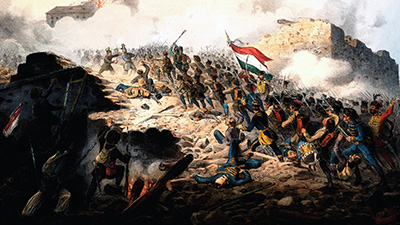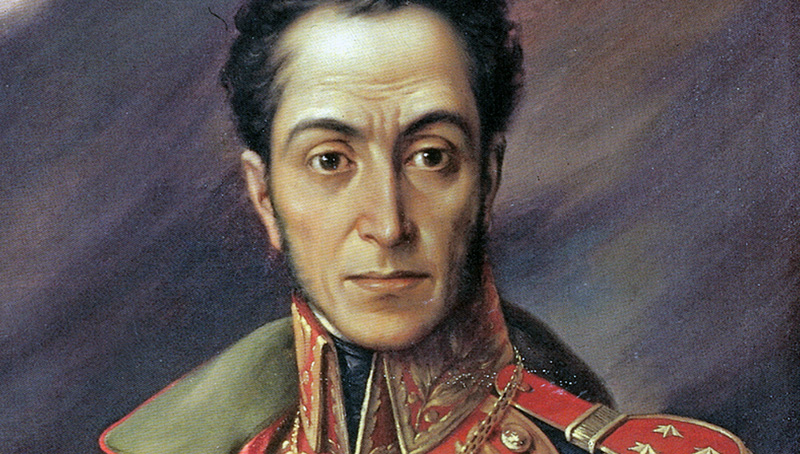Origins of Nationalism
Teacher Resources
Driving Question: How did notions of sovereignty lead to nationalism around the world?
Nationalism emerged alongside the revolutions of the late eighteenth century. People everywhere began demanding a nation of their own and imagining what it should look like. Who was included in these new nations differed from place to place.
Learning Objectives:
- Understand the origin and effects of nationalism on human communities and political revolutions.
- Analyze how nationalism affected different societies and ethnic groups during this era.
- Assess the connections between political revolutions and nationalist wars of unification.
Vocab Terms:
- ethnic
- identity
- ideology
- nation
- nationalism
- nation-state
- self-determination
Opener: Origins of Nationalism
To teach this lesson step, refer to page 2 of the Lesson 2.6 Teaching Guide.
Our online teacher community is a great resource for suggestions on prompting students to explore their different identities.
Zoom in to a personal scale in this activity as you think about identity. This will set the stage for this unit, in which we’ll examine developments in identity that led to nationalism.
Inventing the Nation
To teach this lesson step, refer to page 3 of the Lesson 2.6 Teaching Guide.
Looking to differentiate, modify, or adapt this assignment? Check out our Differentiation Guide.
Today, we live in a world of nation-states. Ideas of nationalism underpin our personal and community identities. The materials in this lesson will help you understand what nationalism is and how it emerged.
-
Guiding Questions
-
Before you watch
Preview the questions below, and then review the transcript.
While you watch
Look for answers to these questions:
- How does this video define nationalism?
- What did Benedict Anderson mean when he called the nation an “imagined political community”?
- According to the video, where did nationalism begin and how did it spread?
- How did nationalism contribute to the extreme violence of the twentieth century?
- How do nationalists construct ideas about their nation?
After you watch
Respond to this question: Do you think nationalism has had a positive or negative impact on our world?
Key Ideas
-
Guiding Questions
-
Before you read
Preview the questions below, and then skim the article. Be sure to look at the section headings and any images.
While you read
Look for answers to these questions:
- What is the definition of nationalism?
- How did the French, Haitian, and American Revolutions help spread nationalism?
- Why was there a decline in religious identity during the long nineteenth century?
- Why was it harder for Germans and Italians to build a unified nation-state than it was for the French?
After you read
Respond to this question: Do you think national identities are the most important types of identities today?
Nations Rise
To teach this lesson step, refer to page 6 of the Lesson 2.6 Teaching Guide.
See how this activity fits into the overall OER Project writing approach in our Writing Guide.
The revolutionary ideas of this period got their start around the Atlantic Ocean, but they didn’t stay there. Soon, a new sort of identity emerged in some of Europe’s old empires, one based on ethnic identification.
-
Guiding Questions
-
Before you read
Preview the questions below, and then skim the article. Be sure to look at the section headings and any images.
While you read
Look for answers to these questions:
- What is ethnicity?
- Why was ethnic nationalism such a threat to the Ottoman and Hapsburg Empires?
- How did nationalist ideas spread to Greek communities?
- What was the dark side of ethnic nationalism?
After you read
Respond to this question: Does nationalism liberate people or does it oppress them?
Closer: Origins of Nationalism
To teach this lesson step, refer to page 7 of the Lesson 2.6 Teaching Guide.
You’ve considered how you think about your identity, and you’ve learned about the origins of nationalism. Now, think about where your loyalties lie.
Nationalist Writing
To teach this lesson step, refer to page 8 of the Lesson 2.6 Teaching Guide.
Our Sourcing One-Pager shares approaches that will help students analyze historical documents—check it out!
The long nineteenth century was a revolutionary epoch. The collection below provides a global view of the enormous changes that were the result.






